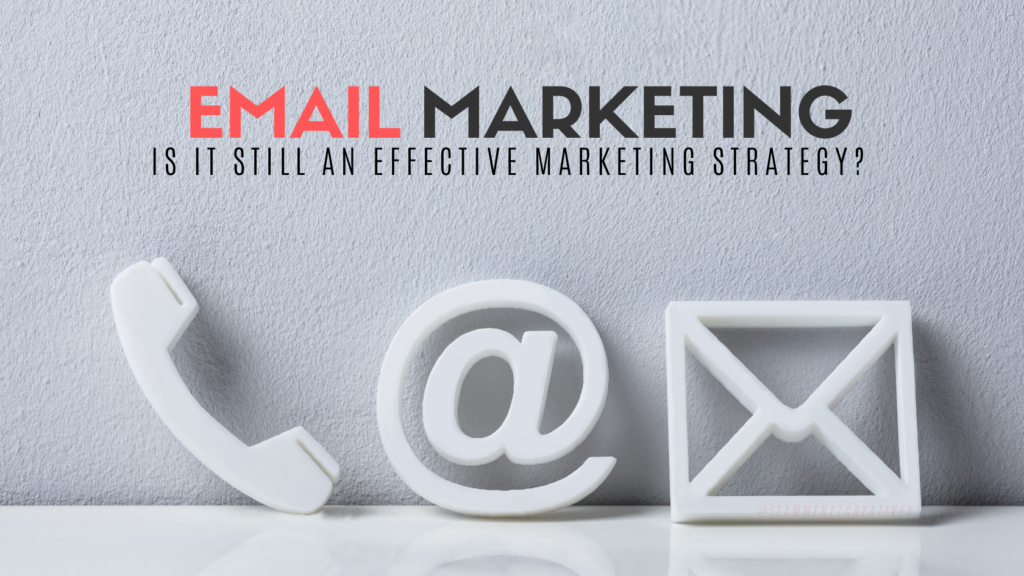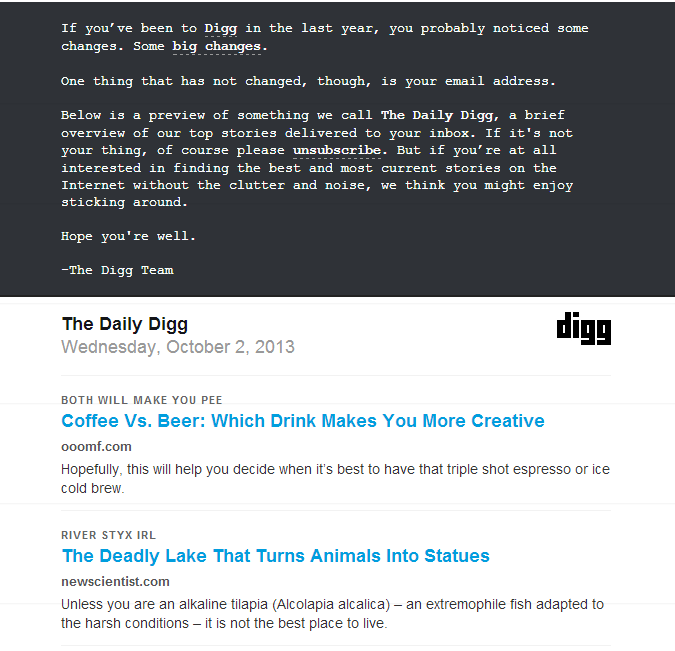
An email marketing strategy is an integral part of any marketing strategy. Email is still the most reliable way to grow your marketing strategy some legs and walk the extra mile that other marketing strategies are unable to reach. A considerable percentage of conversions also take place because of email marketing. It’s a tremendous cost-efficient method of promoting your products, communicating with your customers, and reaching your marketing goals. Email marketing is the king of marketing, able to deliver astounding ROI by giving back $51 for every dollar spent.
As a matter of fact, 95% of companies use email marketing automation, and email marketing is used heavily by 82% of B2B/B2C companies.
More than 290 billion emails are being sent daily, and by 2023, this figure can reach up to 347 billion. SEO marketers should, therefore, harness this marketing giant to their advantage all the more.
What is Email Marketing?
When marketers follow a set of procedures in line with marketing targets, that’s an email marketing strategy. In this regard, emails can be used to serve as a touch base with the market niche, advertise products and services, communicate with subscribers, follow up, and even begin the process of conversion to customers.
Effective Email Strategies Today
Email strategies keep evolving in response to current market trends and consumer behaviour. Here are some trending email marketing strategies you can do to boost your business and your SEO:
1. Prune Your Email List
Remove email addresses in your mailing list that have not opened your email in the last 12 months. The volume of your email list does not help you if they are not clicking your emails. Google takes notice and deprioritizes your email. You’ll get a higher percentage of open rates if you prune your list to retain active subscribers.
2. Personalise your messages
Use customer data to create a personalised message. Amazon does personalisation with taste. It greets customers by name, and even the promos they give are not randomly generated, but based on your purchase history. To Amazon, email marketing has been crucial to their overall customer experience and satisfaction. Amazon’s CEO, Jeff Bezos, understands the value of emails and even reads through customer complaints. Since recommendations make up for 35% of product sales, you’ll clearly understand why he would put much attention into what others brush off as a mere marketing strategy.
You’ll stand out as the majority of brands fail to personalise their emails. Most email service providers (ESP) have this feature so you can personalise your greetings and email subject lines for greater chances at higher open rates. Be strategic in your subject lines as it either makes or breaks your email campaign. It’s the foremost reason why customers and subscribers will open your email or not.
3. Strengthen How You Collect Email Information
Annoying pop-ups asking for information turn people off, and if you are doing this through your newsletters or pages, stop it right away. Find a way to engage your audience with high-quality content that makes sign-ups more automatic for them. People will not give their information to you if they don’t like your content, or they’re disinterested in your promotion. When you do get people’s data, get what you need only, so people will not be wary of having to give too much personal information. For instance, initially, just ask for information that you can use to personalise emails. Learn to create contact pages that work so you can be more efficient in gathering data for your email campaigns.
4. Stop using a “Do Not Reply” emails
There’s no better way to be impersonal with your email list than sending from a donotreply@email.com. Use a real reply-to email address to engage your readers to respond to your campaign. It endears you to your customers and strengthens your credibility as well since you are giving the impression that you’re personally there to receive their reply.
5. Use Your Real Email Signature
Include contact details in your signature, like phone numbers and alternative email. Provide your business address in your signature, even a link to a geo-map of the address, to give that impression you can be found, and you are willing to be found. Remember that when people feel you are merely selling to them, they will get turned off from listening to what you have to say. Email marketing strategies are perfect for establishing a connection and relationship with your target market.
6. Test Your Emails
Check if your emails are also going to spam. Again, if you are keeping a massive email list with a chunk of it not ever opening your emails, prune your list immediately, so your newsletters are not considered as spam. You can open accounts in Gmail, Yahoo, Microsoft to send test emails to before you run your email campaigns. You can also use Litmus or other email testing tools to automate this process for you.
Sending emails without adequately testing them can be embarrassing and unprofessional if emails do not display correctly in some email clients, emails keep landing in spam boxes, and or unappealing design and formatting in your email. You need to test your emails, so you’re sure you will send the best possible version. You need to check HTML validation, email design and layout, sender reputation, test deliverability, and test email subject lines.
Check the following email testing tools you can check out and integrate with your email marketing campaign:
- Litmus: It’s the most popular email tester and often used by most corporations. Litmus helps you preview your emails in various platforms, and allows you to edit code right in the platform. It is a good quality assurance step before sending an email to your email list.
- Mailtrap: It offers different email tests on your email, including preview testing. You can check your HTML if it works properly with various email clients. You can do all testing within a safe staging environment. All of its testings are performed on a fake server to prevent accidentally sending out test emails to your subscribers.
- Email on Acid: Currently offers preview testing on 70 different clients on devices. The more configurations you can test your emails on, the less likely it is for your email to appear broken to your subscriber. Mail on Acid also emphasizes collaboration, especially if you are working with different people in your team about a single article.
- Preview My Email: Designed to help you double-check your code on multiple platforms and different clients. It gives you a number of ways to test your emails, like direct uploading of files, copy-pasting your email content, or sending your email to a special “Preview My Email inbox.” You can also pay for “Preview My Email API” to integrate it into your workflow.
- Inbox Inspector: Let’s you preview your emails in more than 25 of the most popular email clients, like mobile email apps, popular desktop clients, and webmail for free for 30 days.
- HTML Email Check: It’s a tool that helps you validate the markup (HTML, XHTML, CSS) of your emails and newsletters. It also checks images, checks for accessibility, and validates links.
7. A/B Testing
You can run two versions of your email to test which one is more effective with your market. You can try different designs or maybe calls-to-action (CTA). You may also test run with another email management system provider to see if there’ll be a difference and if it’s time for you to move or upgrade.
8. Facebook Audience Insights (FAI)
Upload your email list to Facebook, and the FAI tells you who’s on your email list. You get to see greater insight about your subscribers, like demographic and interests, to tailor-fit your newsletters and promotions even more specific to your market.
9. Schedule Emails to be Sent at Prime Time
The emails experiencing the best open rates were sent around 8 pm to midnight because it’s the first thing people can open the next day before a flood of email enters their inboxes from people that send during office hours (9 am-5 pm). If you are sending it to different time zones, this can be tricky. You can opt to have split email lists according to time zones, two or three would suffice, and pick a median time to send the emails.
Emails sent on weekends also get more promising open rates. Fewer emails go through people’s inboxes, and more people are generally off work, in a relaxed mode, and are more likely to browse through their inboxes since they have more time to do so leisurely.
10. Revive Your Inactive Subscribers
There is a way of reviving your inactive subscribers with a creative re-engagement campaign, somewhere after 90 days upon their subscription—the average range of time when people start to drop out of mailing lists or start being inactive. Start with a catchy subject line and a gripping content that will catch their attention.
The following is a sample of a re-engagement campaign that worked by Digg:
Subject Line: This Is Not An Email From 2006

BONUS: Give Freebies!
It’s a simple marketing strategy that works because you do not want your mailing list to have promotion fatigue with you—every time you send them an email, it’s all about selling them something. Treat your faithful subscribers with a free e-book or create an engaging newsletter from some of their most recent trending search intent, providing brief but useful information regarding that topic.
Since you know the pulse of your market and the people who read your newsletters, be creative in what freebie would add value to them. You can work together with your partners, like provide free security software or VPN service from a cybersecurity company or brand you are tied up with. You don’t have to bore a hole through your pockets or break a bank account to do this, as there are plenty of ways you can run giveaways to your customers as a way of saying thank for their valued support.
Conclusion: Email Marketing Still Beats Facebook and Twitter
The millennials may be all rave about social media, but the numbers don’t lie. Email content reigns in social influence according to a study by SocialTwist. SocialTwist checked 119 referral campaigns from leading brands and companies over 18 months and discovered that email has a significant advantage to convert new customers compared to Facebook and Twitter.
It may not be as hip as the millennial-backed Facebook and Twitter, but there’s a stability that companies depend on with our Gen-Xer, the trusty email. It may have been here for quite some time, but in no way does that diminish its efficiency. It sure is still the best and most powerful marketing strategy in your arsenal that you need to optimise for better business and SEO fully.
John Ocampos is an Opera Singer by profession and a member of the Philippine Tenors. Ever since, Digital Marketing has always been his forte. He is the Founder of SEO-Guru, and the Managing Director of Tech Hacker. John is also the Strategic SEO and Influencer Marketing Manager of Softvire Australia – the leading software eCommerce company in Australia and Softvire New Zealand.
Leave a Reply